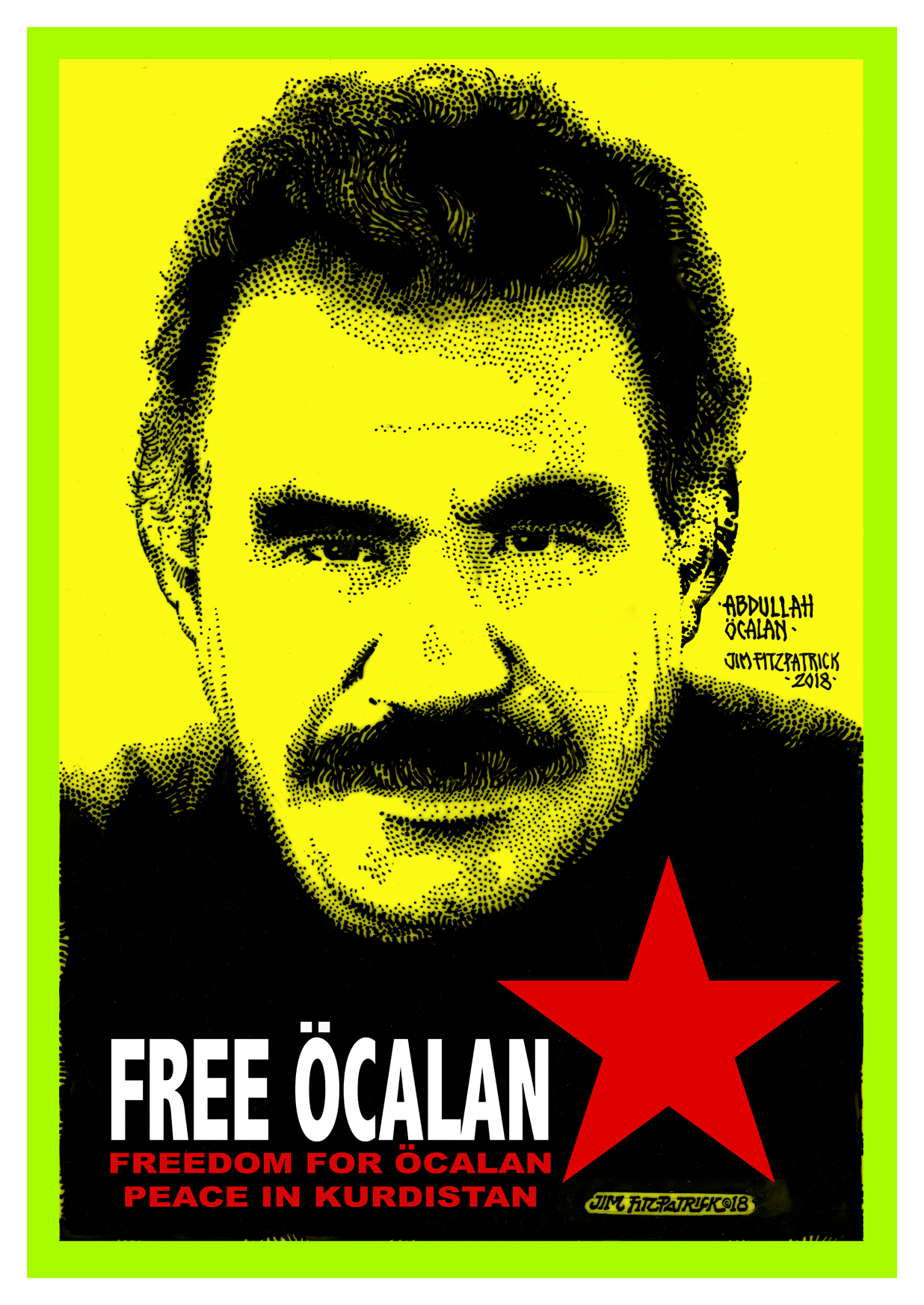Interview with Prof. David Harvey
 Volume one, issue two of the Irish Left Review is now in stores – you can pick it up online or get it from one of the bookshops listed here. The latest issue features an extended interview with Marxist geographer and social theorist David Harvey. Professor Harvey is one of the best-known radical thinkers of the twenty-first century and has published popular books on topics ranging from urban rebellion to postmodernism and from Marx’s Capital to the history of neoliberalism.
Volume one, issue two of the Irish Left Review is now in stores – you can pick it up online or get it from one of the bookshops listed here. The latest issue features an extended interview with Marxist geographer and social theorist David Harvey. Professor Harvey is one of the best-known radical thinkers of the twenty-first century and has published popular books on topics ranging from urban rebellion to postmodernism and from Marx’s Capital to the history of neoliberalism.
In the printed interview he discusses his forthcoming book, ‘The Seventeen Contradictions of Capitalism’, illustrating how the emphasis on exchange value creates a crisis in housing and using contradiction as a basis to tease out a basis for postcapitalist imagination for the Left. Segments of that discussion have appeared previously in Red Pepper.
Below we print unpublished segments of the interview, conducted by journalists Ronan Burtenshaw and Aubrey Robinson, in which Professor Harvey discusses a variety of topics related to his own work and the politics of austerity Ireland.
Q. One of the reasons why this year is important to the Irish Left is that it is the centenary of the Dublin Lockout. That struggle was built upon a very clear class consciousness, which those engaged in left-wing politics today don’t enjoy. Is there a crisis of class consciousness at the moment? How might we address talking about or organising around class to revitalise it?
DH. The traditional way of thinking about class has always been to think about factory labour. During the industrial era factory labour was critical in terms of the creation of class consciousness and organisation. The Left has celebrated, in a way, the factory labourer as the centre of its critical consciousness and politics. We now face the problem that factory labour has largely disappeared in many parts of the world. It is still there in Bangladesh – what has been happening in factories there is similar to the Triangle Fire in New York in 1911 – the suicides in the factories in China and so on. You could take all of those things and put them in Marx’s chapter on the working day in volume one of Capital. You wouldn’t know the difference.
Nineteenth century capitalism is still a very strong presence in the world – it is just not here in the UK, Ireland, the United States in the same way it was thirty or forty years ago. As a result of that I think the concept of the working-class has to be revised. I was never happy with this concentration on factory labour, partly because of my urban interests. I ask questions like, ‘where did the Paris Commune come from?’ It was an urban event. People wanted to get their city back. You look historically and 1848 was about people wanting to get their city back as much as it was about the factories. The same in 1919 in Seattle. Then there’s 1968 – which was to do with Paris, Bangkok, Mexico City. If you look historically the city has always been the site of political activism.
My argument all along has been that we have got to pay attention to that dimension of class struggle. It is not class struggle which is as clearly defined as the factory – between bosses and workers. It is a struggle over who owns and has the right to the city. There has always been a dimension of class struggle which has been urban-based. Because of the transformations that have occurred over the last fifty years it seems to me that dimension of struggle has become even more significant. The Left has not caught up in its ideology with what is going on because it is still fixated with the notion of the factory labourer.
Why don’t we think about the city instead of the factory as the centre of what class action is all about? There is a very interesting moment in Gramsci. Around 1916 he wrote a piece saying, ‘I’m very much in favour of the factory councils, they are critical political organisations. But they need to be supplemented by the ward committees.’ These committees were organising all of those people who couldn’t be organised through the factory – the street cleaners, the cab drivers, and so on. Then he noticed something. He said, ‘the ward committees have a better idea about the condition of the whole working-class because the factory council is good at the sector but they don’t have a vision of the whole.’ So I think that labour should be organising around the whole working-class which includes all of those precarious and temporary workers right now that are servicing the city.
Take the immigrants rights’ movement in the United States in 2006. Without being conscious of this immigrants decided not to go to work on a day because they were protesting some of the legislation that was being proposed. Because of that Chicago, San Francisco, Los Angeles shut down. New York partially shut down. The immigrant population, including the undocumented, refused to go to work for a day and the whole city stopped. This is a tremendous power. I think that the Left has to have imagination and ask, ‘how do we organise a whole city?’
If you say the city is the field of struggle then you end up with a definition of the proletariat which is all of those people who are producing and reproducing urban life. Then you say, ‘we’re going to strike the city’.
Q. Would you suggest something like an audit of how cities reproduce themselves? Looking at transport, factories, finance – asking, ‘what do we need to shut down to make the city stop?’
DH. In recent times transport strikes have been very effective. In France, for example, in the 1990s there were a series of transport strikes which were not simply about the well-being of that sector but about the whole politics which was being addressed to the working-class. In Chile in 1973 there was a right-wing version of this – they managed to get the transport sector to strike about Allende.
There are also other things which are more subtle. I have this idea that domestic workers could refuse to look after the kids one day and see what happens. Wall Street would probably have to close down because you couldn’t leave screaming kids at home alone!
So, there are lots of levers. It is difficult to organise because you’re dealing with scattered workers. This is where geography comes in. The great thing about factory workers is that they are concentrated in a site. The workers I am talking about, for instance delivery drivers – they’re all over the place. There is no factory. Somehow or other you have got to get them involved. There is a very interesting taxi drivers’ union in New York city now and another one in Los Angeles. They are not formally unionised but are the equivalent of a union.
There are a lot of possibilities. We haven’t thought enough about this. I have been in conversation recently with some of the people in the union movement and community organisations to say, ‘let’s talk about how we organise a whole city and what it would mean to have an urban-based class struggle’. Could we move towards a modern version of a Paris Commune?
Q. Why is geography important to critical analysis?
DH. You only have to look at a map of foreclosures to see that there are geographical patterns. They tell you a lot about concentrations of poverty and difficulty.
One of the ways in which capital accumulation occurs is through uneven geographical development. Capital reproduces itself by switching from one part of the world to another. We’ve seen in the last thirty or forty years a history of neoliberal deindustrialisation – the destruction of cities like Detroit and at the same time new cities, in places like the Middle East or China, developing like crazy.
The geography of it all is important to keep track of. Where is the working-class? Some people in the United States say, ‘the working-class is disappearing’, and then you go to China and say, ‘well, there’s the working-class’. It has always been geographically differentiated. Moving things around is one of the ways capitalism manages to outfox its opposition.
Q. Does the geographical perspective give you a blind spot? When you are focused on space do you miss some of the developments of finance capitalism, for example – wherein power is being exercised in more intangible ways?
DH. In my geography I don’t only focus on physical space. Look, for instance, at the different forms that capital can take. I think of it this way: the money form of capital is like the butterfly form, it can flitter around and land anywhere. The commodity is the caterpillar form, it crawls around the world looking for somebody to eat it. And then there is the chrysalis form, which is the factory where things are made.
So, my geography is partly about fixity, partly relative motion and partly relational space. Money can from New York can pop up anywhere. There is therefore a relationality between property prices in Hong Kong, London and Dublin. My geography is not about the absolute spaces of physicality but about the relative spaces of movement, transportation, migration and the relational spaces of, say, rental values.
Q. Is the era of finance capitalism which has developed in the last thirty years fundamentally different from the kind of capitalism which preceded it?
DH. Yes and no.
The credit system has been around for a long time. I did some studies of second empire Paris to see what was going on between 1850-70 and then in the Paris Commune. Finance capital was behind the reconstruction of the boulevards and the new housing. It was a classic case of finance capital entering into urban development. If you look at city-building over the centuries you couldn’t have it without finance capital. These were long-term investments and recuperating the interest rate is critical.
There’s a long history of financialisation in capitalist development. Theorists have not necessarily paid much attention to it because, particularly on the Left, the concentration has always been on the factory. Whereas in my own work I’ve been looking at what is happening in cities – so I see the finance side clearly in urban development, which has become more significant. City building in the 19th century was big, but city building over the last fifty years has been huge. We’ve moved from a situation where about 25% of the world’s population is urban to one where 50% of a much larger population is. What’s going on in China right now, it’s massive. I would argue that finance has become more significant because urbanisation has become more significant.
Financialisation is a continuation of a trend you can see from the 18th century, in that sense there’s continuity, but its scale is now much bigger than ever before. And because its scale has increased its complexity has – with collateralised debt obligations, mortgage pools, etc. There has been a lot of innovation in the financial sector to facilitate this massive transformation on planet Earth which means you’re building cities all over the place.
We need to pay more attention to this and recognise its increasing scale and importance. But don’t imagine that it is something entirely new. I saw it operating very clearly in second empire Paris. What we’ve got now is a blown up version of that and, by the way, there was a crash in the property markets in 1867 in Paris which came down just like 2007/’08. There was a fiscal bankruptcy in New York in 1975. The precursor to the Great Depression in the 1930s was a property market crash in 1928. So you go back and there’s a lot of history of similar crashes.
Q. Another area of your work which is becoming increasingly popular in anticapitalist circles is the idea of the commons. Could you briefly explain what it means and why it is important to the struggle against capitalism?
DH. Let’s examine the question of housing for the moment. It is almost standard thinking that in order to get housing you have to be a homeowner. Therefore the private property system dominates housing provision. I think that’s really problematic. For a lot of people being a homeowner is not good economics – they don’t have the incomes. But being a tenant is a vulnerable situation. So, you might want to have a completely different kind of property regime for the delivery of use values to a significant section of the population.
I think there are ways to try to reorganise what goes on in housing provision through common property regimes. Not state-owned, I want to be clear. This would be social housing which would be co-operatively developed, managed and structured. There are interesting schemes in the United States, for example, called ‘limited equity co-operatives’. If you participate you can’t sell out at a market price. You can only get close to the value you started with. If you got into the housing co-op for €100,000 and twenty years later you want to get out – you get €100,000 plus the inflation or something similar. You can’t go and sell it for a million. So this means there is a permanent pool of housing which is available for a population that can’t afford a million but could afford €100,000 on a reasonable mortgage.
On housing provision, we have to get out of that frame of mind that says ‘the only way you can really do this is through home ownership’. That idea of home ownership has been pedaled for political and economic reasons. Most people have absorbed the idea that this is the only way in which housing can be provided. Arguing for a different property rights regime seems to me to be critical. Many areas that have been commodified need to be returned to a common property idea. I think education and health care are common property rights. To the degree that our world is not delivering good use values for those things it is because it is privatised and turned into a private property right. I’m concerned to support wherever I can initiatives which start to generate common property rights regimes in place of private ones.
That common property regime is not state ownership. We’ve got a dichotomy right now between state and market which is misleading. Neither state nor market but a collective form of provision.
Q. In the Republic of Ireland one of the most important developments from the crisis is the ‘bad bank’ NAMA which owns, in addition to distressed loans, a portfolio of empty buildings and land across the state. In that instance you have state ownership but not common ownership. How would you approach NAMA?
I would pass legislation and say ‘all of this should be converted into a common property regime’. Then you find a population which needs the housing and they then become the co-managers of the common property. Common property doesn’t mean that it is available to everybody. It really means that there are certain people who are involved in the common property rights regime. I would seriously look into the possibility of system like that to take over the empty and vacant housing and use it constructively in relation to people’s use value needs.
– See more at: http://www.irishleftreview.org


























